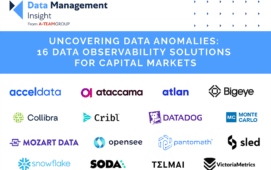
Achieving a 360-degree view of risk is a challenge, but can be achieved by taking a holistic approach to risk that embeds necessary data within a firm’s corporate structure and makes it accessible to all parts of the enterprise. Integrating data in this way enables all parts of the business to work in unison towards identifying risks and establishing strategies to mitigate them.
While building a 360-degree view of risk is not an easy task, not least because data management strategies best suited to these risk management models are never static, it can offer significant benefits beyond improved risk management and resilience. Integrated risk data management is a value proposition in itself, providing better coordination of all types of risk and, in turn, improved analysis that can surface new insights that not only help create mitigation strategies, but also identifying revenue generating opportunities.The challenges and opportunities noted above are addressed in an A-Team Group white paper, sponsored by Bureau van Dijk, a Moody’s Analytics company, and titled ‘Achieving a 360-degree View of Risk with Data-Driven Insights and Strategies’.
The white paper is based on a recent roundtable discussion hosted by A-Team Group and including experts in the financial services and data industries, namely Sherry Hidalgo, senior enterprise data manager at Shaw Industries; Edosa Odaro, chief data and analytics officer at Tawuniya; Jean Panagamuwa, chief data risk officer at Capital One; Erik Morgan, group financial crime prevention, lead global risk model at SEB; and Steve Kleinmann, industry practice lead at Moody’s Analytics.
The white paper provides a guide to developing a 360-view of risk covering the role of master data management, the need to get data and technology right, the importance of including people across the enterprise on the transformation journey, how to ensure leadership alignment and buy-in at all levels of the firm.
The benefits of such a transformation, including automation, accelerated decision making, and improved regulatory compliance, are highlighted in a final section of the white paper, along with perhaps less well recognised but equally important gains described as ‘those little things’, essentially a multiplicity of improvements that combine to make risk data management integration an easy sell.
Subscribe to our newsletter




